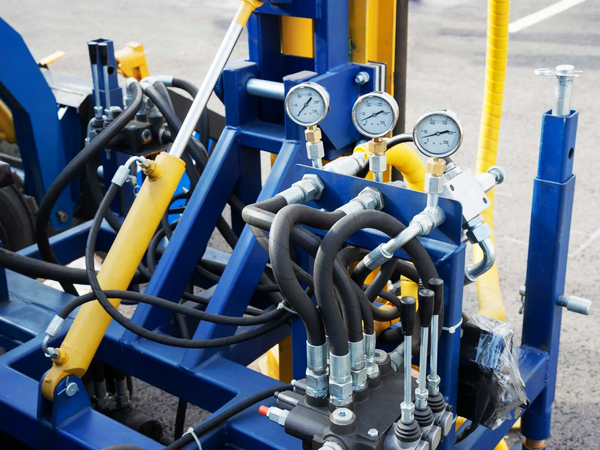In construction machinery, the hydraulic system functions much like the circulatory system in the human body, with hydraulic oil serving as its “blood.” Proper oil levels are critical to equipment performance, efficiency, and service life. For operators and maintenance personnel, mastering correct inspection and maintenance methods is essential.
1. Preparation for Oil Level Inspection
Park the machine on a flat, solid surface
and ensure the chassis is level.
Lower all attachments to the ground and
fully retract hydraulic cylinders.
Shut off the engine and wait 15–30 minutes to allow oil to return to the tank.
Clean the dipstick area to prevent
contamination before inspection.
2. Correct Measurement Procedure
Remove and wipe the dipstick clean.
Reinsert fully, then withdraw to check the
oil mark.
The ideal oil level should be slightly
above the midpoint of the dipstick scale.
Too low: risk of pump damage.
Too high: risk of pipe rupture or seal
failure due to thermal expansion.
3. Oil Quality Inspection
Normal condition: clear or light yellow,
transparent or semi-transparent.
Abnormal signs: darkening, turbidity,
foaming, or metal particles → indicate contamination or
system wear.
4. Hydraulic Oil Maintenance
Replacement cycle: every 1,000–2,000 operating hours or annually, depending on application and
environment.
Always use clean tools for refilling to
prevent moisture and debris intrusion.
Replace or clean hydraulic filters
regularly.
Select the correct oil grade based on
equipment type and seasonal conditions. Avoid mixing brands or specifications.
5. Monitoring and Preventive Maintenance
Track system performance indicators:
working pressure, abnormal noise, oil temperature.
Conduct periodic oil analysis to assess
condition and detect early issues.
Avoid common mistakes:
Mixing different brands/oil types.
Only topping up without full replacement
(additives degrade over time).
Ignoring warning signs such as dark oil,
excessive foaming, or rapid level drops.
Operating with insufficient oil levels.
Conclusion
Regular inspection and scientific
maintenance of hydraulic oil levels are key to maximizing machine efficiency,
extending service life, and reducing downtime. Remember the core procedure: “Level ground, bucket flat, chassis aligned, oil slightly above
mid-scale.” Consistent attention to detail ensures your
equipment operates safely and reliably, safeguarding both productivity and
investment.







